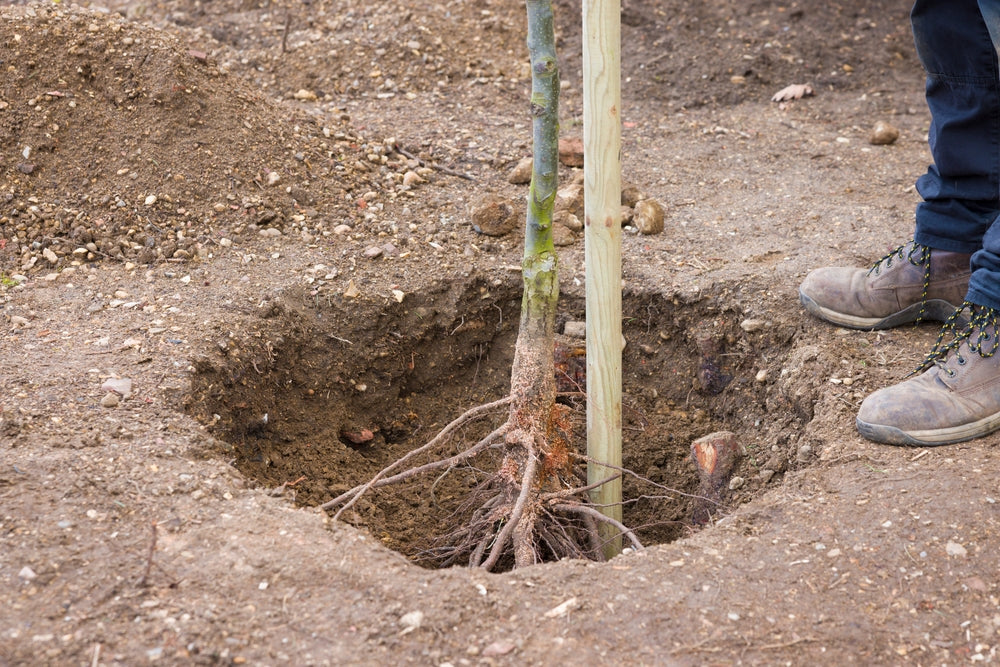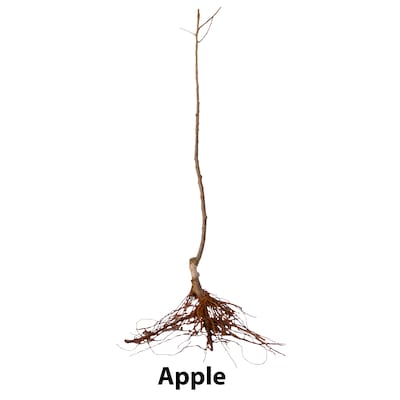A Comprehensive Guide to Planting Bareroot Trees: From Preparation to Growth
Planting bareroot trees is a fascinating and fulfilling activity that allows you to connect with nature on a deeper level. It's a delicate process that requires a harmonious balance of scientific knowledge and an artistic touch. It would help if you were observant and patient, paying close attention to every detail, from the soil conditions to the weather and the root system to the canopy structure of the tree. You must have a profound understanding of the specific needs of the tree species you're working with, including its growth patterns, water and nutrient requirements, and vulnerability to pests and diseases.
In this, we will walk you through each bareroot tree planting step, from selecting the right site, preparing the soil to handle the tree roots, and securing the tree in place. We will also cover the post-planting care your trees need to thrive, including watering, mulching, pruning, and monitoring. By following our guide, you can ensure that your bareroot trees will have the best possible start in life and grow into strong, healthy, and beautiful trees that will provide shade, beauty, and ecological benefits for years.

Understanding Bareroot Trees
Before delving into the planting process, it's essential to understand what bareroot trees are and why they are used. Bareroot trees are dormant trees dug up from nurseries or other locations while in their dormant state, usually during winter. Unlike container-grown trees, which have soil around their roots, bareroot trees have their roots exposed. This makes them lightweight, more accessible to transport, and often less expensive. Additionally, planting bareroot trees allows for better root establishment and reduces the risk of transplant shock compared to container-grown trees.
Choosing the Right Tree Species:
When selecting a tree species for planting, it's crucial to consider different factors to ensure the longevity and health of the tree. Climate is one of the most critical factors, as trees have specific temperature and moisture requirements that must be met for them to survive and thrive. The soil type is also vital, as different tree species have additional soil requirements. For example, some trees prefer well-draining soil, while others require more moisture-retentive soil.
Sun exposure is another critical consideration. Some trees require full sun, while others can thrive in partial or complete shade. Available space is also essential, as some trees need more room to grow. Choosing a proportionate tree species for the open space is crucial, as overcrowding can lead to poor growth and health problems.
It's also recommended that local native species be researched when planting trees. These tree species are well-adapted to the regional weather and soil needs and are often easier to care for once established. They have already developed natural resistance to local pests and diseases, so they are less likely to require chemical treatments or other forms of intervention.
In summary, selecting suitable tree species involves considering various elements, including weather, soil type, sun exposure, and available space. Taking the time to research local native species can also help secure the long-term victory of the tree.
Preparation Of Bareroot Trees
When selecting a location to plant a tree, it's required to think of a few key factors to ensure its successful growth and health. Firstly, you'll need to determine the amount of sunlight required by the tree species you plan to plant. Some trees need total sun exposure to thrive, while others can tolerate partial shade. Therefore, choosing a location that provides the right amount of sunlight is essential based on the specific species you want to plant.

Soil Preparation Of Bareroot Trees
Test the soil pH and nutrient levels to determine if any amendments are needed. Dig a hole broad enough to adapt the spread of the tree's roots without bending or crowding. Break up compacted soil to promote healthy root growth and ensure proper drainage.
Tree Inspection: Before planting a tree, take some time to carefully examine its roots for any signs of damage or disease. Look for broken or damaged roots and trim them with clean, sharp pruners. Accomplishing this will support and promote healthy growth and ensure that your tree has the best possible start in its new home. Remember, healthy roots are essential to a healthy tree, so don't rush through this important step!
Planting Process Of Bareroot Trees
Create a small mound of soil at the base of the planting hole to support the tree's roots. To successfully plant a tree, firmly position it at the center of the hole, ensuring the roots are spread out evenly. Backfill the hole with soil and firmly tamp it down to remove air pockets and provide stability. Watering the newly planted tree thoroughly is crucial to settle the soil around the roots and provide essential moisture. Recognize the need to follow these steps to ensure a healthy and thriving tree.
Mulching: Apply a layer of organic mulch near the tree's bottom, going a few inches of space around the trunk to prevent rot. Mulch helps retain moisture, suppress weeds, and regulate soil temperature, promoting healthy root growth.
Watering: Provide regular watering, especially during the tree's first growing season, to ensure adequate moisture for root establishment. Watch soil dampness levels and adjust watering frequency based on weather conditions and soil type.

Pruning Bareroot Trees
Prune any dead, damaged, or crossing branches to promote healthy growth and improve the tree's structure. Avoid heavy pruning during the first year after planting to minimize stress on the tree.
Monitoring Bareroot Trees
Watch the tree regularly for symptoms of stress, disease, or pest infestations. Keep an eye on leaf color, growth patterns, and overall vigor, addressing any issues promptly.
Planting bareroot trees is a rewarding endeavor that contributes to the attractiveness and fitness of our environment. Following proper planting techniques and providing ongoing care ensures that your trees thrive and become a lasting part of the landscape. Remember that each tree species has unique requirements, so take the time to research and understand the needs of the trees you're planting. With tolerance, devotion, and a little knowledge, you can appreciate the looks and usefulness of healthy, vibrant trees for years to come.
How Do You Plant a Bareroot Tree?
Dig the hole twice as wide as the circumference of the roots and 4 inches deeper.


















































